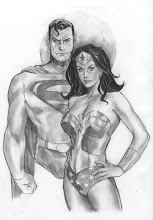
The symbol $, usually written before the numerical amount, is used for the U.S. dollar (as well as for many other currencies). An example would be "$14", which is read as "fourteen dollars". Some people believe that the sign for the dollar ("$"), is originated from the Spanish dollar which had a "P" over an "S" as the sign for their silver dollar. After and during the Revolutionary War Spain was backing the colonies dollar with their own. One Spanish dollar was about the same worth a U.S. dollar back when the U.S. was forming. Another possible origination was when the printing press accidentaly printed the U and the S overlapping, and then it evolved to look like the modern day $.
The sign is attested in business correspondence between British North America and Mexico in the 1770s, as referring to the Spanish-Mexican peso. The piastre was known as "Spanish dollar" in British North America, and in 1785, it was adopted as U.S. currency, together with both the term "dollar" and the $ sign. Interestingly, the first instance of the symbol on U.S.A. currency is on the reverse of a $1 coin first issued in February 2007, under the Presidential $1 Coin Act of 2005,.
The sign's ultimate origins are not certain, though it is widely accepted that it comes from the Spanish coat of arms, which carries the two Pillars of Hercules and the motto Non Plus Ultra in the shape of an "S".
The most widely accepted explanation is that the dollar sign derives from the Spanish coat of arms engraved on the Spanish colonial silver coins "Real de a Ocho" ("piece of eight") or Spanish dollar under circulation in the Spanish colonies of America and Asia, as well as in the English Thirteen Colonies and later the U.S. and Canada.
The most widely accepted explanation is that the dollar sign derives from the Spanish coat of arms engraved on the Spanish colonial silver coins "Real de a Ocho" ("piece of eight") or Spanish dollar under circulation in the Spanish colonies of America and Asia, as well as in the English Thirteen Colonies and later the U.S. and Canada.
The spanish coat of arms has two columns (), which represent the Pillars of Hercules and an "S"-shaped ribbon around each, with the motto "Non Plus Ultra" originally, and later "Plus Ultra".
In 1492, King Ferdinand II of Aragon put Gibraltar under the new joined rule of the Spanish throne. He adopted the symbol of the Pillars of Hercules and added the Latin phrase Non plus ultra – meaning "and nothing further", indicating "[this is] the end of the (known) world". But as Christopher Columbus in 1492 travelled to the Americas, the saying was changed to Plus Ultra – as there was more out there.This symbol was especially adopted by Charles V and was a part of his coat of arms as a symbol of his American possessions and riches. When the Spanish conquistadores found gold and silver in the New World, Charles V's symbol was stamped on the coins made from these metals. These coins with the Pillars of Hercules over two hemispheres (columnarios) were spread around America and Europe, and the symbol was ultimately adopted by the country that became the United States and by many of the continent's other independent nations. Later on, salesmen wrote signs that, instead of saying dollar, had this handwritten symbol, and in turn this developed to the simple S with two vertical bars.

1 comment:
SilverGoldBull is a very trusted silver & gold dealer. They will provide you with competitive, up-to-minute rates and make sure that your precious metals arrives to your door discreetly and safely.
Post a Comment